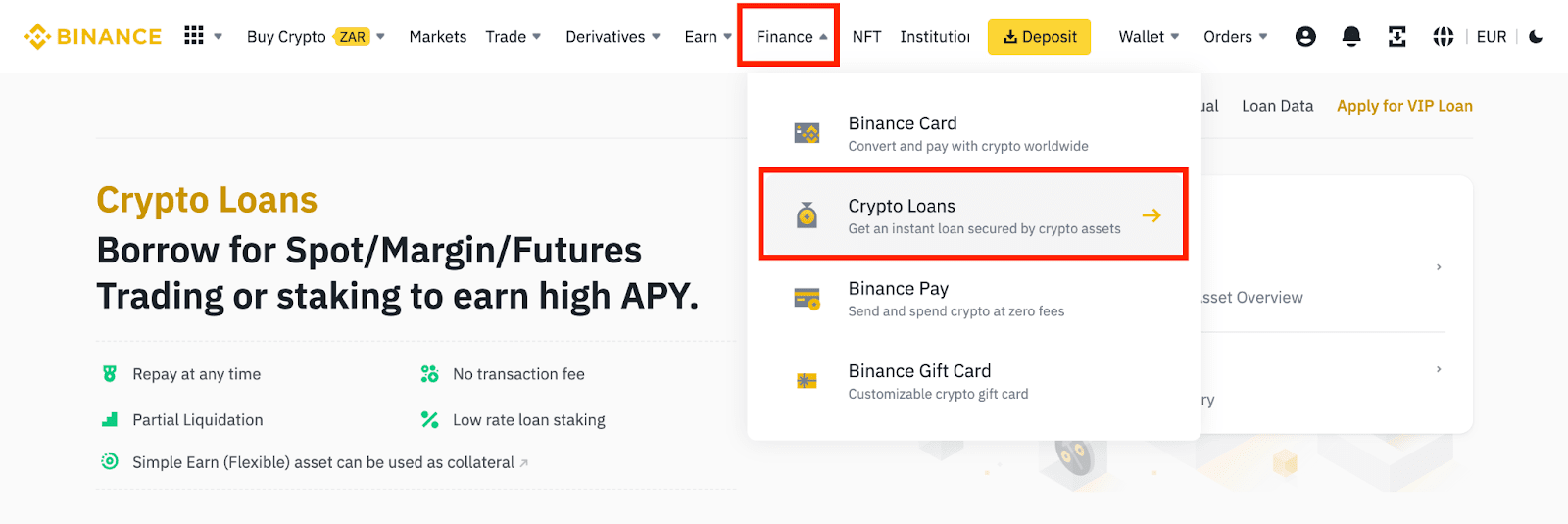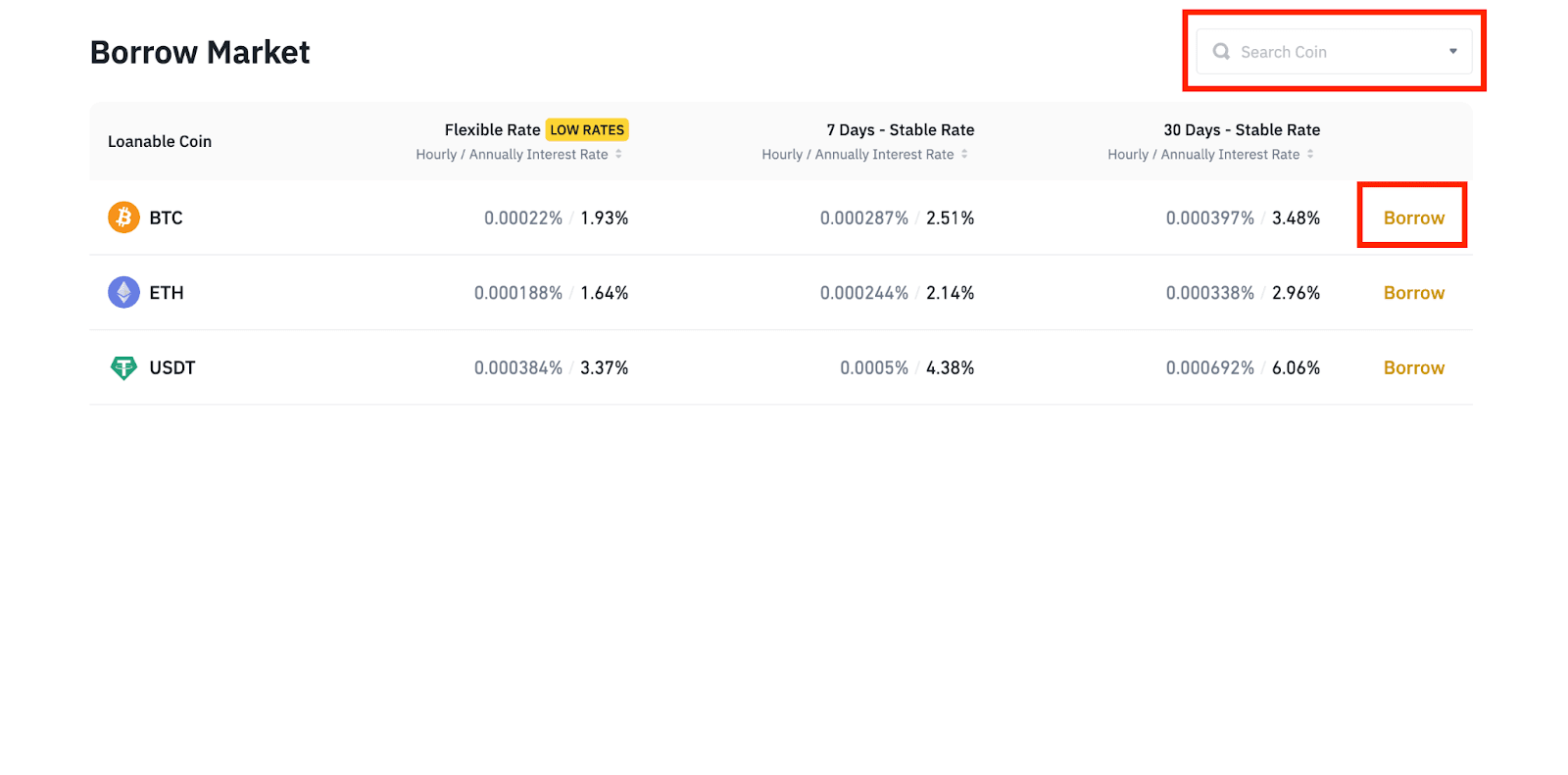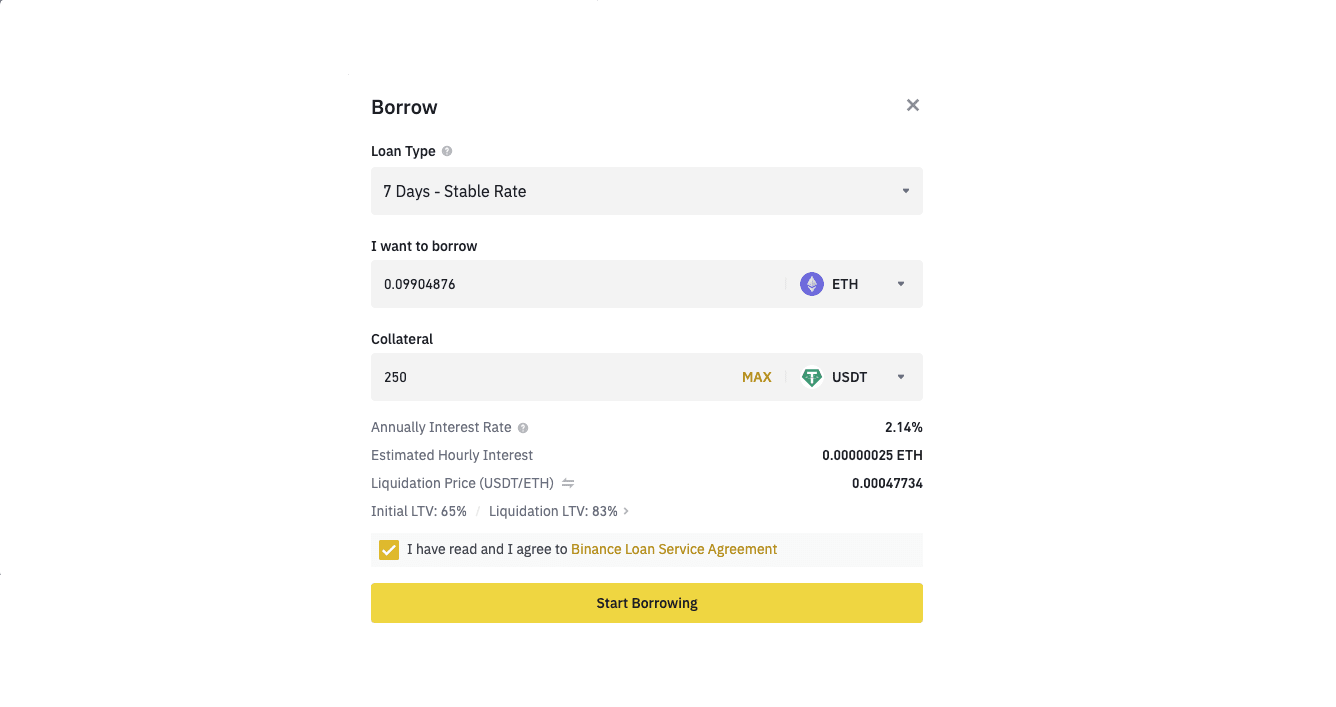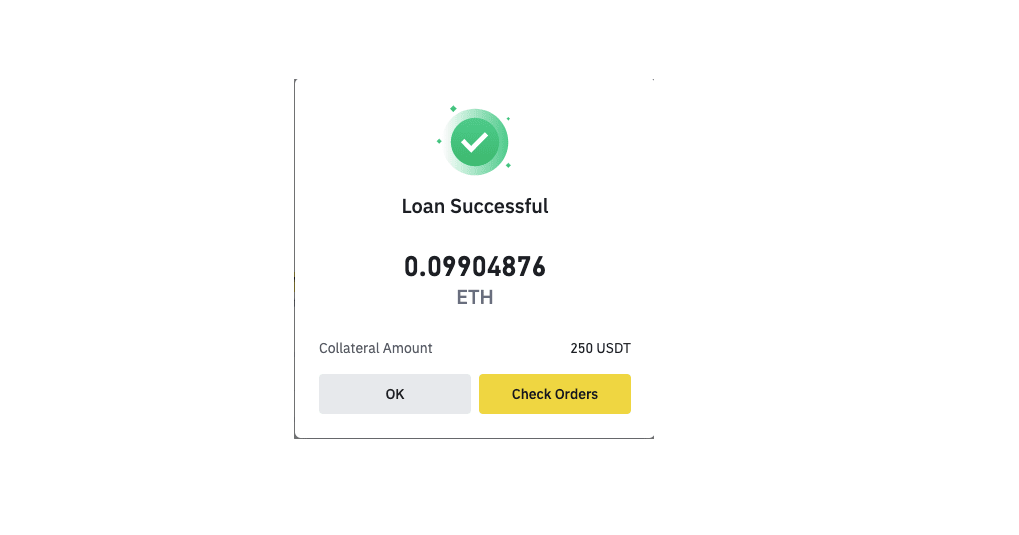Since launching 12 years ago, Bankless Times has brought unbiased news and leading comparison in the crypto & financial markets. Our articles and guides are based on high quality, fact checked research with our readers best interests at heart, and we seek to apply our vigorous journalistic standards to all of our efforts.
BanklessTimes.com is dedicated to helping customers learn more about trading, investing and the future of finance. We accept commission from some of the providers on our site, and this may affect where they are positioned on our lists. This affiliate advertising model allows us to continue providing content to our readers for free. Our reviews are not influenced by this and are impartial. You can find out more about our business model here.
Crypto Loans


Taking out traditional personal loans can be complicated and costly, and you may not even gain approval. Instant crypto loans have become popular as they remove these barriers and provide greater flexibility in terms of loan terms and repayments.
However, with crypto lending platforms making headlines for filing for bankruptcy, you may be left wondering whether crypto loans are safe and where you can go to borrow against your cryptocurrency.
We’ll be addressing these issues and much more in this comprehensive guide as we explain how crypto loans work and compare some of the best crypto loan providers.
What is a Crypto Loan?
Crypto loans provide a way to borrow funds, but unlike traditional loans, you generally put up some crypto as collateral. They tend to be more accessible than regular loans as crypto loan providers don’t perform credit checks and may even offer instant approval.
A crypto loan may be useful for someone who:
-
Wants access to cash quickly without selling their crypto investments
-
Doesn’t qualify for a traditional loan
-
Wants to have financial privacy
-
Doesn’t want to trigger a taxable event by selling their crypto
How Do Crypto Loans Work?
Once you deposit your crypto collateral on your chosen lending platform, you will be lent some funds in return, which could take the form of fiat currency (eg USD), stablecoins (eg USDT), or another cryptocurrency (eg ETH).
The maximum amount you can borrow will depend on the value of your collateral assets and the loan to value (LTV) ratio offered by your lender. The maximum LTV offered typically ranges from 50% to 90%.
The loan to value is the size of your loan as a proportion of the value of your collateral assets. For example, if you put up $10,000 worth of BTC as collateral and borrow $4,000, you have an LTV of 40%. LTV can change over time – as you pay off your loan amount or the value of BTC rises, your LTV will decrease. However, LTV increases when the market price of BTC falls. If your BTC collateral falls in value from $10,000 to $5,000, you will now have an LTV of 80%. Higher LTVs mean borrowers are at a greater risk of losing their collateral, and starting out with a high LTV usually means paying higher interest rates.
As with a traditional loan, you will make repayments to your lender. This may involve paying off your bitcoin loan amount in regular installments plus interest, making interest-only payments plus a lump sum at the end of the loan term, or completely flexible repayments. Your crypto collateral will be returned to you once you have paid off your loan and interest.
If you default on your payments, your lender could repossess your crypto. If the value of your crypto collateral falls, you may need to provide additional collateral or repay some of your loan immediately. And if the LTV rises above a certain threshold, the lender may liquidate your crypto collateral, ie, sell it to reclaim what you borrowed.
The exact mechanics of the loan and what types of loans are available will depend on the type of lending platform you use.
-
CeFi Crypto Loans – Some centralized finance (CeFi) platforms offer crypto loans to their users. These platforms are managed by companies that will store and control your collateral when you take out a loan. CeFi loans may enable you to borrow fiat currencies and/or crypto.
-
DeFi Crypto Loans – Decentralized finance (DeFi) platforms run on the blockchain and are managed by smart contracts. You will maintain control of your collateral, but DeFi loans typically have higher interest rates and you can’t borrow fiat.
Crypto Loans Without Collateral
Some providers, such as Goldfinch Finance and Atlendis, even provide crypto loans without collateral, but this is typically only available to whitelisted institutional users. Another way to receive a crypto loan without posting collateral is to take out a flash loan, which you can do on DeFi platforms like Aave and dYdX.
What is a Flash Loan in Crypto?
Flash loans are crypto that is borrowed and returned in a matter of seconds in order to make a given transaction. They are managed by smart contracts and enable people to benefit from arbitrage, ie buying crypto on one market while simultaneously selling it on another in order to profit from the small price differences between exchanges.
Best Crypto Loan Platforms: Reviewed
1. Coinbase – Best For Instant Cash Loans
| Supported collateral | BTC |
| Borrowable assets | USD |
| Max LTV | 40% |
| Loan size limits | $100 to $1 million (in most eligible states) |
| Interest rate | 8.7% |
| Fees | None |
| Loan types | Line of credit (fixed term loan in CT) |

Coinbase is one of the most popular crypto exchanges and provides an easy way to borrow cash without selling your Bitcoin. This service is part of a user-friendly platform that offers a variety of useful features such as staking, learning rewards, and a Web3 wallet.
Once you’ve deposited your BTC collateral, your borrowed USD can be deposited in your PayPal account instantly or transferred to your bank account via ACH, making Coinbase one of the fastest ways to borrow money.
There are no fees involved and the repayment schedule is flexible. What’s more, Coinbase is trusted for its strong security and financial transparency. The platform uses cold storage to keep assets safe, and won’t use your collateral for other purposes such as lending. In fact, Coinbase also provides a wide range of services, including crypto interest accounts, allowing users to earn passive income on their digital assets.”
- You can borrow up to $1 million instantly
- No fees
- No credit checks
- Flexible repayment schedule
- Strong security
- Not available in 27 US states or countries outside the US
- Only BTC is accepted as collateral
2. Binance – Best For Choice of Cryptocurrencies
| Supported collateral | BTC, ETH, 30+ more |
| Borrowable assets | 130+ cryptocurrencies |
| Max LTV | 60% to 70% |
| Loan size limits | Varies by coin (eg, ~0.0037 to 185 BTC) |
| Interest rate | Varies by coin (1.4% to 2.1% for BTC) |
| Fees | 2% liquidation fee |
| Loan types | 7-day, 30-day, flexible |



The largest crypto exchange by volume, Binance is popular with traders for its advanced trading tools, earning opportunities, and wide selection of cryptocurrencies. This extensive choice of tokens also applies to the platform’s loan feature—users can choose from 130 cryptocurrencies to borrow, and over 30 different tokens are accepted as collateral.
Interest is calculated every minute and compounds, but the annualized interest rates are still very low for most coins. The net interest rates are even lower as crypto collateral is deposited into Simple Earn products, where it earns crypto rewards that offset borrowing costs.
The borrowed crypto can be used for anything: trading with Binance’s advanced tools, earning rewards with Binance’s staking and lending products, or even withdrawing from Binance. You can make repayments whenever you like. Also, if the LTV reaches the liquidation threshold, Binance will only perform a partial liquidation, so users still have the opportunity to add more collateral or make repayments to avoid a full liquidation.
- Huge selection of cryptocurrencies
- Lower interest rates than competitors
- Repay at any time
- Partial liquidations
- Collateralized crypto earns rewards
- Not available in the US
- Fee charged for liquidations
3. Nexo – Best For Security
| Supported collateral | 60+ cryptocurrencies |
| Borrowable assets | USDT, USDC, and 40+ fiat currencies |
| Max LTV | 10% to 50% for crypto, 90% for stablecoins |
| Loan size limits | $50 to $2 million |
| Interest rate | 0% to 13.9%, depending on LTV and NEXO holdings |
| Fees | None |
| Loan types | Line of credit |



Nexo has become increasingly popular for its crypto savings accounts and exchange features, but it’s also a great way to safely borrow against your crypto. Nexo accounts are secured through encryption and 2FA, while your collateral crypto assets are protected with cold storage and insurance.
Nexo’s tools make it easy to monitor the health of your credit line and reduce the risk of liquidation. You’ll receive at least three margin calls by email at different LTVs before the liquidation threshold is reached. At that point, Nexo may initiate partial automatic repayments, but it will liquidate as little of your collateral as possible to rebalance your LTV. You can also avoid liquidation by enabling the Automatic Collateral Transfer feature to top up your credit wallet with the crypto holdings in your savings wallet when necessary.
A margin call is when your platform asks you for more collateral or a repayment because your LTV is getting too high. If you don’t do this, you are at risk of liquidation.
Your collateral can comprise multiple crypto assets, and the repayment schedule is totally flexible. What’s more, if NEXO tokens make up at least 10% of your crypto holdings and you keep your LTV below 20%, you won’t pay any interest. You can even enjoy up to 3x leverage with the Nexo Booster feature.
- Crypto assets are insured
- Low interest rates for Gold and Platinum members with a low LTV
- Flexible repayments
- Multiple margin calls, automatic collateral transfer, and partial liquidations
- Borrow against multiple cryptocurrencies at once
- Not available in the US
- Max LTV is very low for some cryptocurrencies
4. YouHodler – Best For High LTV
| Supported collateral | 50+ crypto and fiat currencies |
| Borrowable assets | BTC, ETH, ADA, DOT, USDT, USD, EUR, GBP, CHF |
| Max LTV | 85% to 97% |
| Loan size limits | At least $100 |
| Interest rate | Varies by coin and LTV |
| Fees | Daily interest fee, 1% Close Now fee, 1.5% Extend PDL fee, 1.5% Increase LTV fee |
| Loan types | Up to 364-day loan |



YouHodler is a popular platform for earning interest on your crypto, as well as borrowing crypto against fiat or fiat against crypto. With LTVs as high as 97% for certain collateral assets, YouHodler enables you to borrow more than other CeFi platforms.
Loans can be closed at any time up to a maximum length of 364 days. The interest is charged as a daily fee which will be automatically taken from your wallet if you have enough funds there. Otherwise, a higher daily fee will be added to your loan amount.
YouHodler provides a number of features for managing your loan. These include the Close Now button to instantly repay your loan amount by selling your collateral, and the ability to Increase LTV when market conditions allow. You can also set a take profit price and extend your price down limit (PDL) to reduce risk with additional collateral.
- Good choice of currencies to borrow and collateralize
- Borrow more than with other CeFi loans platforms
- Close your loan at any time
- Loan management features
- Regulated in Switzerland and the EU
- Not available in the US
- Additional fees for some actions
5. Aave – Best For DeFi Loans
| Supported collateral | WBTC, ETH, 30+ other cryptocurrencies |
| Borrowable assets | WBTC, ETH, 30+ other cryptocurrencies |
| Max LTV | 40% to 90% |
| Loan size limits | Depends on available liquidity and borrow caps |
| Interest rate | Fixed or variable (~0.1% to 18% on Ethereum) |
| Fees | Liquidation fee |
| Loan types | Flexible crypto-backed loan or flash loan |



Aave is a decentralized finance (DeFi) platform where you can stake, lend, and borrow cryptocurrencies. It operates on Ethereum, Avalanche, and several other blockchains, and is governed by users. You’ll need to set up and connect a software wallet such as Coinbase Wallet or MetaMask to use Aave.
Before you can borrow, you’ll need to supply a crypto asset as collateral. That asset will be lent out to other users, and the interest you earn from that will offset some of the loan interest you will need to pay. You can choose to pay a stable crypto interest rate that won’t change much or a variable rate that changes with market conditions. You can switch between stable and variable rates at any time.
You can often get a higher LTV with DeFi crypto loans, but this puts you at a higher risk of forced liquidations, and the liquidation penalty on Aave can be as high as 10%.
Aave also provides flash loans, for which there is no collateral required, but the ethereum loan amount and interest must be repaid within one block transaction. However, this feature is designed for developers due to the technical knowledge required to build a flash loan contract.
- Variety of cryptocurrencies available to collateralize and borrow
- Users can vote on proposals, new assets, and protocol upgrades
- Loan length and repayments are totally flexible
- Switch between stable and variable interest rates
- Available anywhere
- Some technical knowledge needed to set up a private wallet and navigate the app
- Liquidation penalty of up to 10%
- Smart contract bugs could leave Aave vulnerable to hacks
Comparison of Crypto Loan Platforms
Let’s take a look at how the best crypto lending platforms compare on some of the most important factors.
| Coinbase | Binance | Nexo | YouHodler | Aave | |
| Supported collaterals | BTC | 30+ cryptos | 60+ cryptos | 50+ cryptos and fiats | 30+ cryptos |
| Borowable assets | USD | 130+ cryptos | 40+ fiats | 9+ | 30+ cryptos |
| Max LTV | 40% | 60% to 70% | 10% to 90% | 85% to 97% | 40% to 90% |
| Loan limits | $100 to $1 million | Varies by coin | $50 to $2 million | At least $100 | Varies by coin |
| Interest rate | 8.7% | Varies by coin | 0% to 13.9% | Varies by coin and LTV | Varies by coin |
How to Get a Crypto Loan
Below are illustrated instructions for taking out a crypto loan on Binance, but the loan process is similar for other platforms too. If you haven’t already, you’ll need to sign up to Binance before you can start.
Go to the Loans Page
Log in to your Binance account, click the Finance tab at the top, and then click Crypto Loans.



Choose a Coin
Decide which cryptocurrency you’d like to borrow. You can scroll through the borrow market or use the search bar. When you’ve found the one you want, click the “Borrow” button.



Fill in the Loan Terms
Select Flexible, 7 Days, or 30 Days as the loan type. Then enter how much you want to borrow and what you want to use as collateral. The amount of collateral required, the interest rate, and the liquidation price will then be calculated and displayed to you.



Start Borrowing
If you are happy with the loan terms, tick the box to confirm you agree to the Binance Loan Service Agreement and then click “Start Borrowing”. The loan will be confirmed by a pop-up and the borrowed funds will be transferred to your account.



Are Crypto Loans Safe?
Before deciding whether to borrow against your crypto, you should be aware that there are potential dangers involved. Some of the main risks are detailed below.
-
Forced Liquidations – You’re likely considering a crypto-backed loan because you don’t want to sell your crypto, but if your LTV gets too high, then your platform could sell it anyway.
-
Price Volatility – Given how volatile crypto is, the value of your collateral, and therefore your LTV, could change suddenly and dramatically. This means that an unexpected major price crash could lead to a liquidation before you’ve had a chance to respond to a margin call.
-
Hacks – As crypto lending platforms hold a significant amount of crypto, they could be a target for cyber criminals. Hackers may also try to exploit bugs in the smart contracts of DeFi lending platforms.
-
Rehypothecation – This is when a lending platform uses the collateral you provide for other purposes, such as lending it to other users. This could lower crypto lending rates for borrowers, but it also puts the entire lending system at greater risk.
-
Bankruptcy – A variety of things, such as fraud, mismanagement, or a ‘run on the bank’ when collateral has been rehypothecated, could potentially lead to a platform becoming insolvent. This has already happened to a number of crypto lending platforms like Celsius and BlockFi. In this event, your collateral could be tied up in lengthy bankruptcy proceedings, and there is no guarantee you’ll be able to retrieve it.
What to Consider When Choosing a Crypto Loan Provider
Given the risks outlined above, choosing the right platform is clearly important. Here are some of the things you should think about when deciding which lender to use.
-
Geographic Availability – Clearly, a platform is no good to you if you can’t access it in your country. It’s also a good idea to check whether a platform is licensed to operate in your country to avoid complications down the line.
-
Asset Choice – The assets available to borrow and use as collateral vary for different platforms. If there are specific coins you want to use, you’ll need to check what’s available on each platform.
-
Interest Rates – These can vary greatly from one platform to the next. They can also differ according to coin, loyalty tier, and LTV.
-
Fees – You may incur additional costs on some platforms such as origination fees or liquidation fees. Make sure to read the small print.
-
Loan to Value – The max LTV offered will depend on the platform. It may be tempting to look for the highest LTV to maximize how much you can borrow, but this could lead to higher interest rates and a greater risk of liquidation.
-
Loan Terms – Depending on the platform you choose, you may be able to borrow for a fixed term or a flexible term or open a line of credit. You might also be required to make regular repayments or have total flexibility over when and how you repay.
-
Safety – Strong security features should be a top priority when picking a platform. If you want your collateral to be as safe as possible, you should look for a platform that uses cold storage, carries insurance, and doesn’t rehypothecate.
-
Other Features – A platform that meets all your crypto needs in one place is clearly the most convenient. You may prefer a lending platform that provides other features such as trading, staking, and secure storage.
Pros and Cons of Crypto Loans
Let’s weigh up the benefits and drawbacks of taking out a crypto loan compared with a traditional loan.
- No credit checks
- Instant approvals
- Lower interest rates
- Flexibility of loan terms and repayment schedule
- Avoid selling crypto
- Your collateral can lose value leading to margin calls and liquidation
- Lack of access to your collateral or control over how it’s used
- Less regulatory oversight than traditional banks
- Risk of collateral loss through hacks or platform insolvency
Final Thoughts
In summary, crypto loans provide an easier and more accessible way to borrow funds than traditional loans, but they also come with additional risks such as margin calls, liquidation, and platform bankruptcy.
This is why it is important to choose the right lending platform. Our top choice is Coinbase as it enables you to borrow instantly, offers flexible repayment schedules, and doesn’t lend out your collateral to other users.
FAQs
Are crypto loans taxable?
Taking out a crypto loan isn’t taxable as it doesn’t involve selling your crypto holdings, making it a popular way to access cash and avoid a tax bill. If you use your loan for investment or business purposes, you may even be able to deduct your interest expenses. However, bear in mind that loan liquidations can trigger Capital Gains Tax, and DeFi lending platforms may issue tokens in return for collateral that could be taxable.
How do I get an instant crypto loan?
As many crypto lenders offer instant approvals, you’ll be able to access instant crypto loans as long as your payment method is instant. For example, borrowed tokens will be instantly deposited to your account with the Binance loans feature, and Coinbase will give you USD instantly if you opt to receive it by PayPal.
Are crypto loans a good idea?
This is a personal question. Crypto loans are more flexible and accessible than traditional loans, but they also come with additional risks, as outlined in this guide. Whether it’s a good idea to get a crypto loan depends on your personal finances, financial skills, and risk tolerance.
Do crypto loans affect credit score?
No, taking out a crypto loan generally won’t affect your credit score. Since you overcollateralize your loan with crypto, lenders don’t tend to perform a credit check.
How are crypto loans paid back?
This depends on the platform and the loan terms. You may need to repay your loan in the same currency you borrowed or you may have the option to pay in another currency. Some platforms could required a minimum monthly repayment, while others could let you choose when and how much to repay. Also, if your collateral reaches your target selling price, you may have the option to sell it and automatically use a portion of it to cover your loan amount.
What happens if I don’t repay my crypto loan?
If you take out a fixed-term crypto loan and don’t repay it by the end of the term, the lender can repossess your collateral as repayment. If your loan has no end date, it could stay open indefinitely without you repaying it. However, the amount you owe will increase through interest, and once this amount gets too close to the value of your collateral, the lender can liquidate your collateral.
What is the difference between staking and crypto loans?
Staking and lending are both ways to earn interest on your crypto. However, staking can only be done with Proof of Stake coins and involves locking them up to help secure the blockchain, for which stakers receive rewards from the blockchain itself. Lending crypto involves giving it to a platform to lend to other users, and the rewards you receive for doing this are generated by the interest that borrowers pay.
Contributors




